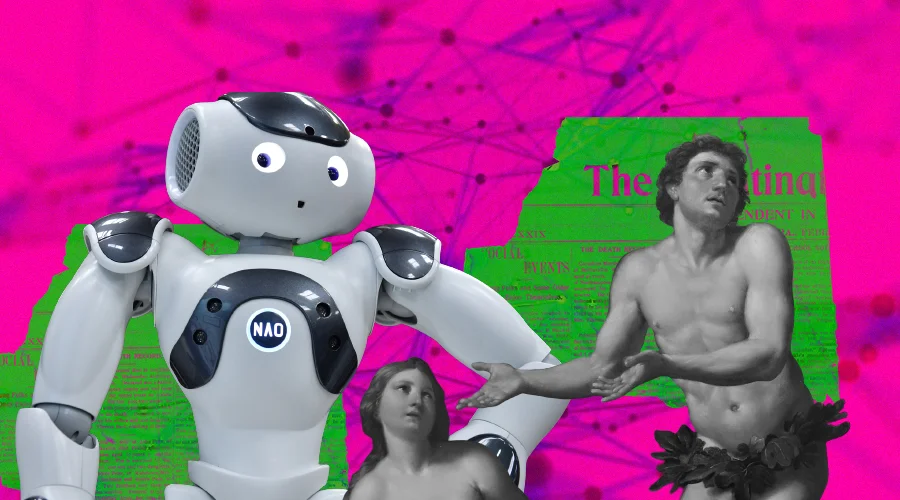CMU Researchers Introduce the Open Whisper-Style Speech Model: Advancing Open-Source Solutions for Efficient and Transparent Speech Recognition Training
SOURCE: HTTPS://WWW.MARKTECHPOST.COM/
OCT 03, 2023
ARTIFICIAL INTELLIGENCE MIGHT SOON TELL YOU HOW ADAM AND EVE LIVED
SOURCE: ANALYTICSINSIGHT.NET
APR 29, 2022

Uncovering evidence for historical theories and identifying patterns in past events has long been hindered by the labor-intensive process of inputting data from artifacts and handwritten records. Normally, epigraphers – scholars who study ancient texts written on durable materials such as stone, metal, or pottery – use their knowledge of repositories of information and digital databases to perform “string matching” searches to find textual and contextual parallels. However, differences in the digital-search query that can exclude or conceal relevant results and that the texts often are discovered not in their original context can complicate the work. Starting from Adam and Eve to the Greek gods there is so much to discover and researchers are using advanced technologies like Artificial Intelligence and Machine learning to get more accurate results. Most scientific research to date has focused on whether Adam and Eve could have passed on genetic material to everyone living; however, this doesn’t seem to be the type of ancestry the Bible is concerned with. While all genetic ancestors are genealogical ancestors, the inverse is not necessarily true.
So, what does this mean for Adam and Eve? Well, in 2004, a computer simulation of life on Earth was created to test and see when the most recent common ancestor for all humans was. The researchers put higher barriers than historically existed to stack the odds against there being a common ancestor in the recent past. Despite this, the results, published in Nature, found common ancestors only two or three thousand years ago. Apart from Adam and Eve, the adoption of artificial intelligence and machine learning techniques is speeding up such research and drawing attention to overlooked information. But this approach, known as “digital humanities”, is in a battle for funding against more future-focused applications of AI.
Restoring or recreating archaeological artifacts is a complicated problem for computer vision models. Previous work — algorithms learning to reassemble photos or documents, for example — has not accounted for the degradation of fragments, unclear images, or imprecise piece-fitting.
Researchers use AI to restore ancient Greek texts
Ancient texts written on stone tablets, such as those found in Greece, provide invaluable insight into the history of past civilizations. However, being as much as 2,600 years old, these priceless inscriptions haven’t been immune to the ravages of time. They’re often damaged and littered with chips and cracks, sometimes even missing entire fragments of text. To fill these gaps and reconstruct the missing sections, historians typically rely on a discipline called epigraphy, which uses “grammatical and linguistic considerations, layout and shape, textual parallels, and historical context” to estimate what the text originally contained. As this is a very complex and time-consuming process, the team behind Google’s DeepMind AI joined forces with the University of Oxford to develop Pythia, the first ancient text restoration model that uses deep neural networks to recover missing characters from damaged text.
How AI is helping us bring history back to life
Artificial intelligence technology has had a profound impact on a wide variety of industries in recent years, transforming almost every aspect of our lives in the process. While most of the talk surrounding AI has focused on how it will affect the human workforce, it can’t be denied that it’s found some very promising applications in certain areas. One of these areas is archaeology, where AI’s ability to analyze large amounts of data in a short amount of time and uncover hidden patterns is very useful. Whether it’s used to restore ancient Greek texts, translate long-lost languages, reassemble damaged archaeological artifacts, or uncover hidden designs in the Nazca Lines, AI is becoming an increasingly important tool in archaeologists’ arsenal, helping them bring history back to life.
In conclusion, looking at the continued developments there is no lie that in no time artificial intelligence will be able to tell how Adam and Eve used to live in the past. Also, we will get the answers to many unsolved mysteries.
LATEST NEWS
Augmented Reality
Hi-tech smart glasses connecting rural and remote aged care residents to clinicians
NOV 20, 2023
WHAT'S TRENDING


Data Science
5 Imaginative Data Science Projects That Can Make Your Portfolio Stand Out
OCT 05, 2022

SOURCE: HTTPS://WWW.MARKTECHPOST.COM/
OCT 03, 2023
SOURCE: HTTPS://NEWS.MIT.EDU/
AUG 17, 2023
SOURCE: HTTPS://WWW.SCIENCEDAILY.COM/
AUG 21, 2023
SOURCE: HTTPS://WWW.SCIENCEDAILY.COM/
AUG 17, 2023
SOURCE: HTTPS://WWW.SCIENCEDAILY.COM/
AUG 07, 2023
SOURCE: HTTPS://WWW.INDIATODAY.IN/TECHNOLOGY/NEWS/STORY/69-MILLION-GLOBAL-JOBS-TO-BE-CREATED-IN-NEXT-FIVE-YEARS-AI-AND-MACHINE-LEARNING-ROLES-TO-GROW-IN-INDIA-2367326-2023-05-02
JUN 28, 2023